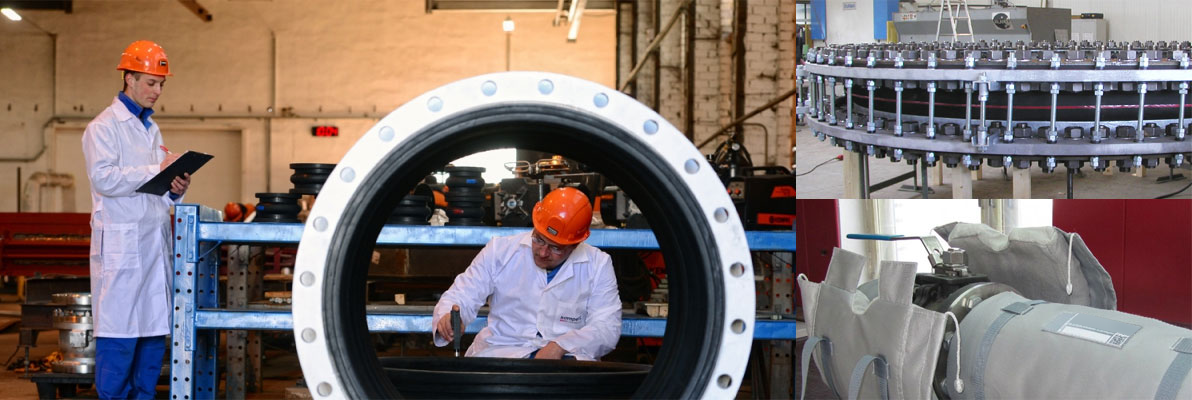

Fabric expansion joints: application and mounting configurations
Application areas of fabric compensators are various: steel industry and metallurgy, chemical plants, ore dressing plants, oil refineries, coal mines, as well as cement factories, household waste recycling plants, landfill gas utilization plants and other areas of modern industry. Apart from the above, fabric expansion joints are often used in the food industry. This is due to absence of high pressures and presence of quite strong vibrations.
There are many different joints mounting configurations.
Clamping band is the simplest and most convenient way of fixing. This method is used in case of pipelines with a round cross-section. The disadvantage is limited temperature ranges and internal operating pressure.
The most common mounting method is the use of flange connection. It provides simple and easy installation, as well as the ability to use the compensator at maximum temperatures and pressures. The flange method of fastening is used for pipelines with a round and rectangular cross-section; rigid fixation of fabric part with the connecting flange is ensured.
In case of fastening with a belt, the tightest fixation of the fabric part and the pipe is ensured (due to bolted connection). It is used in circular as well as rectangular piping systems. It can be mounted either directly onto the duct surface, or using an adapter flange.
The life of fabric expansion joints is approximately 8,000 hours on average. In case of using fabric-type expansion joints in alkaline, high-temperature, abrasive and other hazardous media, it is necessary to install a protective pilot insert to prevent the expansion joint from early destruction.
